The capital city of Italy’s Tuscany region, Florence is internationally esteemed for its high concentration of Renaissance art and architecture. Because it served as a wealthy and important center for medieval trade and commerce, the city gave birth to the Italian Renaissance movement.
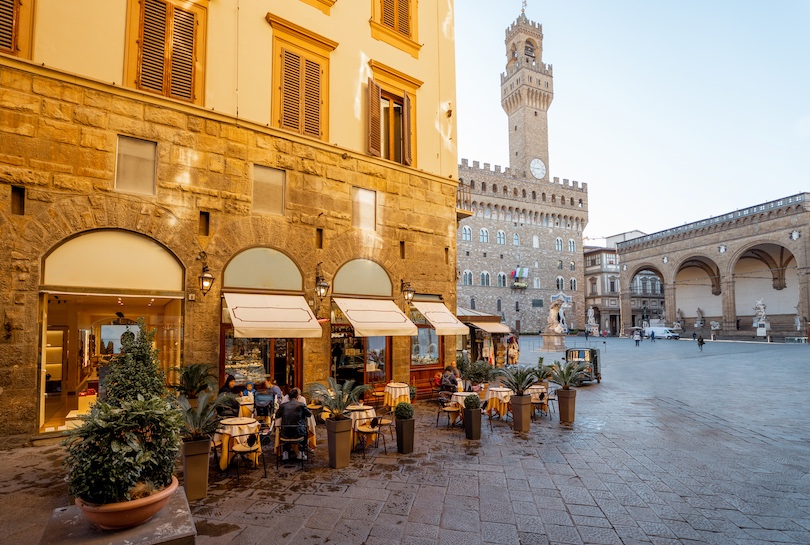
Florence is also credited with propagating many artists, inventors, writers, scientists and explorers as well as inventing opera and the florin currency, which lifted Europe from the Dark Ages.
Simulating one enormous outdoor art museum, the city of Florence attracts millions of tourists every year. Walking is the best way to see the major tourist attractions in Florence. Some of the best places to walk include the Ponte Vecchio, a beautiful bridge spanning the Arno River and featuring a number of high-end jewelry shops.
15. Mercato Nuovo
 © Horst Lieber / Dreamstime
© Horst Lieber / DreamstimeCovered with an ornate loggia supported by open arches, the Mercato Nuovo is one of the most unusual marketplaces in Florence. While souvenirs like straw hats are sold here, it’s the history and legends connected with Mercato Nuovo that most attract visitors. In the center of the loggia is the “stone of shame,” a place where debtors were once punished with bare-bottom spankings.
A colorful Italian expression for winding up broke may have originated from this practice. On the southern side of the loggia is the Fontana del Porcellino, a fountain that features a bronze boar statue. Rubbing the snout of the “Piglet” is said to bring good fortune.
14. San Miniato al Monte
 © Vvoevale / Dreamstime
© Vvoevale / DreamstimePerched high atop a hill, the oldest church in Florence offers panoramic views of one of Italy’s most scenic cities. Behinds its charming green-and-white façade is a treasure trove of beautiful art. Medieval frescoes, mosaics and inlaid-marble floors adorn the chapels of the Romanesque structure. The Renaissance era is well represented too.
With its carved pilasters, medallion ceilings, marble statuary and colorful frescoes, the Cappella del Cardinale del Portogallo showcases the diversity of the era. San Minato is most enchanting in the early evening when Benedictine monks celebrate mass with Gregorian chanting.
13. Piazza della Repubblica
 © Dragan Jovanovic / Dreamstime
© Dragan Jovanovic / DreamstimeOne of the oldest sections of Florence, the Piazza della Repubblica sits on the site of the city’s Roman forum. The Colonna dell’Abbondanza, a monument built in 1431, marks the exact center of the ancient settlement. Densely inhabited during the Medieval Era, the square was completely renovated during the 1800s.
A triumphal arch on the west side of the plaza commemorates its transformation. Today, the plaza is best known for its elegant Neoclassical structures, luxury shops and outdoor eateries, including the famous Giubbe Rosse café, a notable meeting place for artists and writers.
12. Loggia dei Lanzi
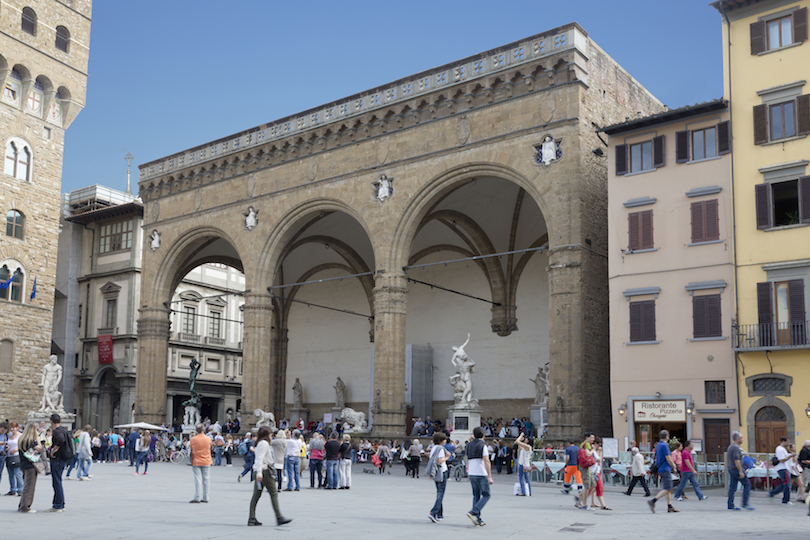 © Natalia Volkova / Dreamstime
© Natalia Volkova / DreamstimeRenaissance art and architecture are on full display at this ceremonial building adjacent to a corner of the Piazza della Signoria. Supported by columns topped with Corinthian capitals, wide arches invite visitors to view the sculptures under the bay of this open-air gallery.
Benvenuto Cellini’s bronze statue of Perseus holding the head of Medusa is a star attraction. Carved from a single block of white marble, the “Rape of the Sabine Women” by Giambologna is awe-inspiring as well. Considered a masterpiece of composition and movement, the dramatic sculpture was constructed to be viewed from all sides.
11. Santa Croce Church
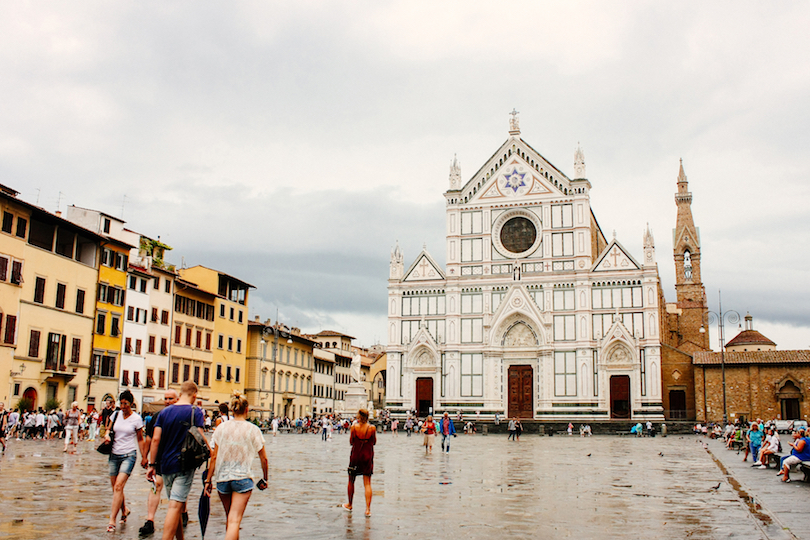 © Dark3y3s / Dreamstime
© Dark3y3s / DreamstimeNo visit to Florence is complete without paying homage to the city’s most famous inhabitants, many of whom are buried within the church nicknamed the Temple of the Italian Glories.
The world’s largest Franciscan church, Santa Croce is the final resting place for luminaries like Michelangelo, Rossini, Galileo and Dante. The cathedral’s 16 chapels also feature breath-taking works of art, including frescoes by Giotto painted at the height of his talent.
The realism of his “Death of St. Francis” helped lay the foundation for the Renaissance Era. Located in the cathedral’s first cloister, the Pazzi Chapel is a must-see as well. Built after a design by Filippo Brunelleschi, it’s regarded as a masterpiece of Renaissance architecture.
10. Palazzo Pitti
The Palazzo Pitti is a large 15th century palace situated on the quieter south bank of the Arno river The palace was long the residence of Florence’s rulers until 1919, when it was handed over to the Italian state, which transformed the palace into a museum complex.
In spite of its metamorphosis from royal residence to a state-owned public building, the palazzo, sitting on its elevated site overlooking Florence, still retains the air and atmosphere of a private collection in a grand house.
9. Piazzale Michelangelo
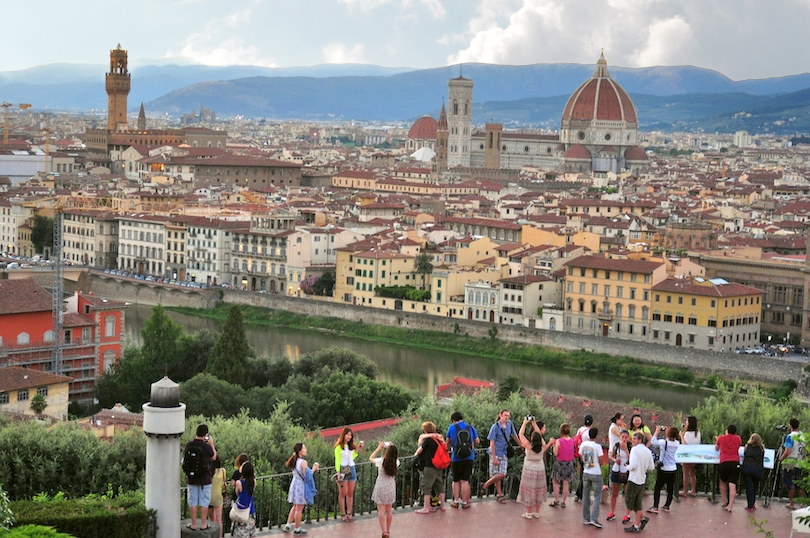
The Piazzale Michelangelo is a large, partly pedestrianized square located across the Arno River from the center of Florence. From the square visitors have a magnificent view over the city.
The spacious square was laid out in 1860 by Giuseppe Poggi, a local architect who is also known for his creation of boulevards around the center of Florence.
8. Boboli Gardens
Located behind the Palazzo Pitti, the Boboli Gardens were created by the Medici family in the 16th century. The beautiful and varied Italianesque garden is home to a large number of statues and fountains. The gardens have passed through several stages of enlargement and restructuring work.
They were enlarged in the 17th century to their present extent and have come to form an outdoor museum of garden sculpture that includes Roman antiquities as well as later works.
7. Basilica di San Lorenzo
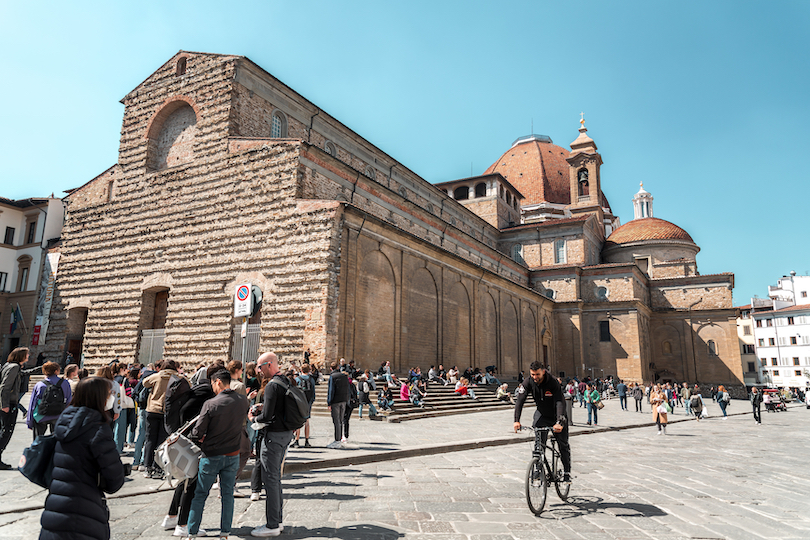
Situated at the center of the city’s main market district, the Basilica di San Lorenzo is one of the oldest churches of Florence and was the burial place of all
The church, originally designed by Filippo Brunelleschi in the 15th century, is an early example of ecclesiastical Renaissance architecture. The façade of this church was never completed, giving it a striking, rustic appearance. Inside the church is pure Renaissance neo-classical splendor.
6. Galleria dell’Accademia
The Galleria dell’Accademia or “Gallery of the Academy” is certainly the most famous for its sculptures by the great Renaissance artist, Michelangelo. His Prisoners (or Slaves), his St. Matthew and, above all, the outstanding statue of David are what draw most of the hundreds of thousands of visitors the museum welcomes every year.
Other works on display are Florentine paintings from the 15th and 16th centuries, including works by Sandro Botticelli and from the High Renaissance such as Giambologna’s original plaster for the Rape of the Sabine Women.
5. Palazzo Vecchio
One of Florence’s most significant buildings is the Palazzo Vecchio, a grand palace overlooking the Piazza della Signoria. Built in the 12th century, the Palazzo Vecchio housed the powerful Medici family as well as Florence’s supreme governing body for six centuries.
Since 1872, it has served in part as a museum and as the city town hall. This impressive palace packs a wealth of artifacts and art works that include beautiful frescoes, sculptures, painted ceilings, intricate carvings and tapestries that all depict historic and Biblical events.
4. Piazza della Signoria
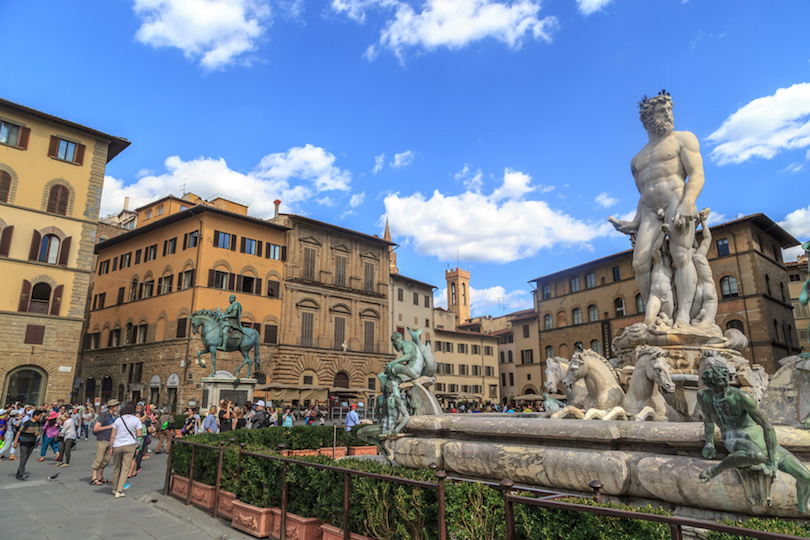
Serving over the centuries as an important center for politics and the site of several historic episodes, the Piazza della Signoria is a beautiful square centered among some of the top attractions in Florence.
It is here that tourists can visit remarkable places like the Palazzo Vecchio, the Uffizi Museum, the Palazzo Uguccioni, the Loggia de Lanzi and the nearby Ponte Vecchio bridge. This town square is also a treasure trove of notable sculptures such as a replica of Michelangelo’s Statue of David, the Fountain of Neptune, Hercules and Cacus as well as Perseus with the Head of Medusa.
3. Uffizi Gallery
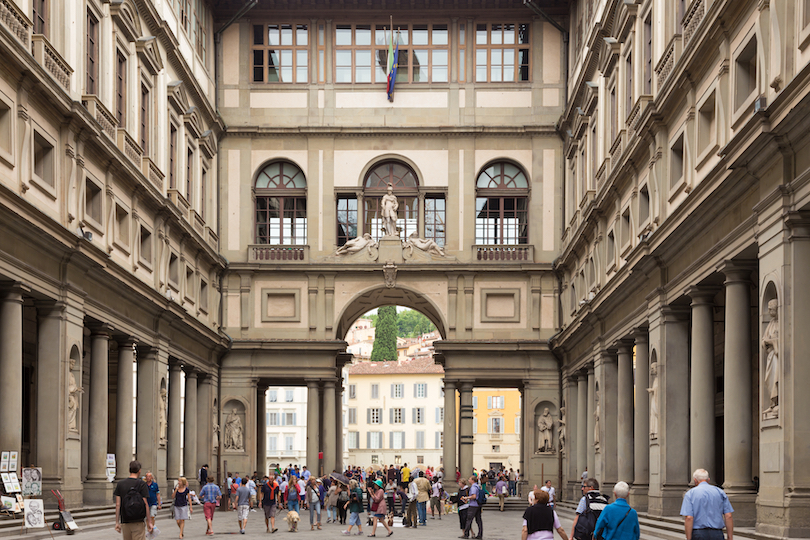
Regarded today as one of the world’s greatest art museums, the Uffizi Gallery is located off the Piazza della Signoria. This former palace was first built in 1560 to house the offices of the city magistrates.
After the ruling dynasty of the Medici family relinquished its power, the palace evolved into an art gallery to showcase its stunning collection of Renaissance art treasures. Opened to the public since 1765, the museum offers thousands of art works by masters like Michelangelo, Botticelli, Leonardo da Vinci and Titian.
2. Ponte Vecchio
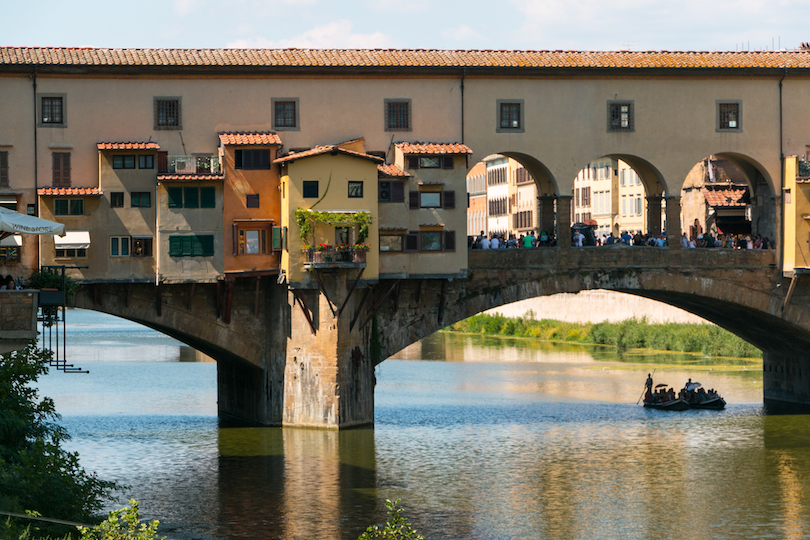
The Ponte Vecchio is the oldest, as well as the most famous, of the six bridges that cross Florence’s Arno River. Up until 1218, this bridge, also known as the Old Bridge, was the only bridge to cross that river.
Historians believe that the original bridge goes back to Roman times. The bridge connected the Uffizi Gallery and the Pitti Palace across the river from it. Unfortunately, a flood destroyed the structure in 1333.
Twelve years later, in 1345, the bridge was rebuilt. Workers replaced the original five arches with three, and widened the main part of the bridge. At this time, the bridge hosted shops and houses authorized by the Bargello, who was a combination mayor and magistrate.
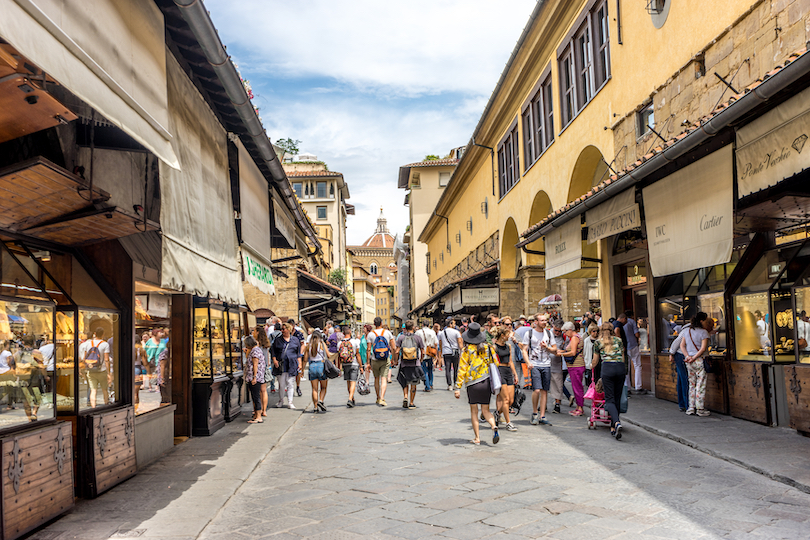
Towards the 15th century, the shops were sold to private owners. Butchers, fishmongers and greengrocers occupied most of the shops. However, in 1593, due to the rank smell of the waste from these shops, Ferdinand I dictated that only goldsmiths and jewelers were allowed to own shops on the bridge. Today the shops sell affordable jewelry as well as expensive antiques and leather goods. In addition, the bridge serves as an art museum.
During WWII, the Ponte Vecchio was the only bridge crossing the Arno in Florence that the Germans did not destroy. Instead, they demolished the buildings on each end of the bridge to block access to it. In November 1966, the river again went through a serious flood. This time, however, the bridge withstood the weight of the silt and the water.
The Ponte Vecchio is a work of art, created with elements from all parts of the Florentine character. A walk across it gives one the chance to view and enjoy the many aspects of Florentine life both old and new.
1. Santa Maria del Fiore
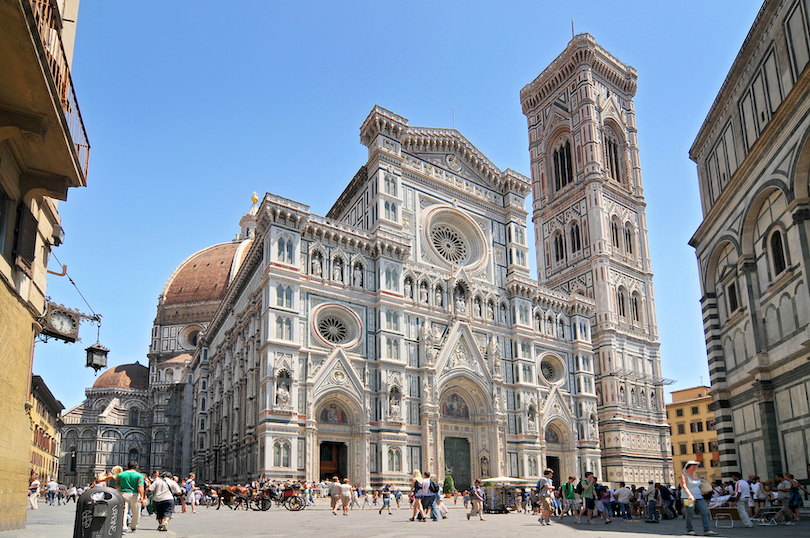
Dominating the panoramic view of Florence is the Santa Maria del Fiore, the domed cathedral that is often called the Duomo. Known today as the world’s largest masonry dome, this majestic cathedral features 600 years worth of stunning architecture and art works.
Planning for the new church began in the late 1200s and building started in 1296. Unfortunately, politics and the plague interrupted the construction several times. In 1375, workers were instructed to tear down the partially completed church and start over. Except for the marble on the outside, the Florence Cathedral was completed in 1436.
The first architect to work on the Cathedral was Arnolfo di Cambio. He designed it in the Gothic style and left space for a huge dome to top the building. However, he had no idea how to build this dome. Fortunately, Filippo Brunelleschi, a goldsmith and clockmaker, solved this puzzle.
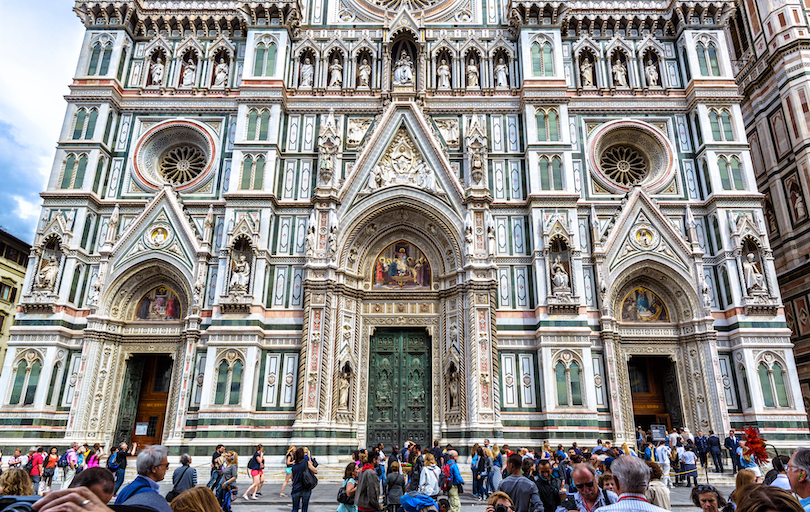
Added in the 15th century, Brunelleschi’s dome is 45 meters wide and 114.5 meters high (148 and 377 feet), and it is the largest masonry dome ever built. Because of the size of the dome, Brunelleschi made use of a unique building technique that had been used previously in Persia. He used 37,000 tons of brick, stone and timber, along with a unique herringbone pattern of laying the bricks, to create the dome. Four hundred sixty three steps were included to allow access to the top of the dome.
The facade of the Florence Cathedral was only partially built and remained that way for some time. It was then dismantled in 1587-1588. Architects at that time felt that the original Gothic exterior was old fashioned. In 1864, a competition was held to design a new façade. Emilio de Fabris won the competition, and in 1887, his façade was completed. It was a neo-Gothic façade in green, white and red marble, which complemented the cathedral’s 14th century bell tower. The use of circles, squares and triangles distinguished it from other French churches.
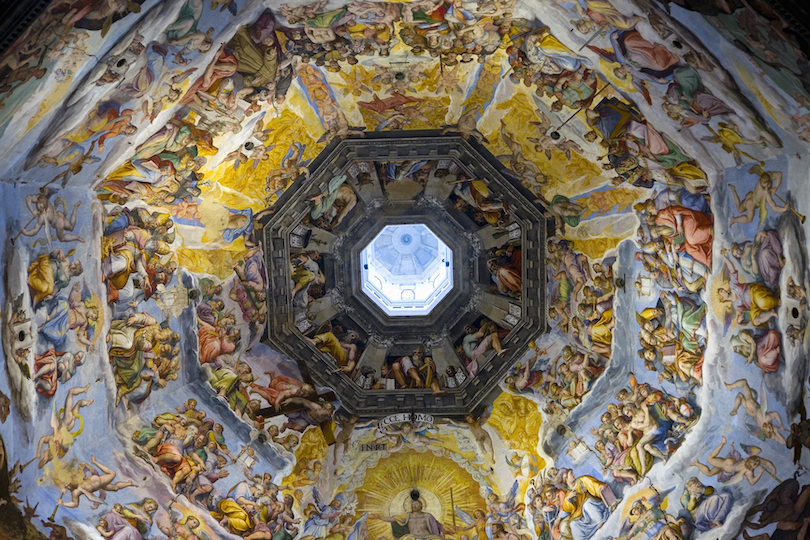
There are many great works of art in the interior of the Cathedral. Some of the most beautiful aspects of the Cathedral are the frescoes. The largest of these depicts the Last Judgment, designed by Giorgio Vasiri, but painted by his student, Federico Zuccari.
Through close inspection of the Cathedral, one can notice the differences in architectural styles used through the years. For instance, while the inside of the church, with the big arches and vaults is Gothic style, the dome is Renaissance style. One can find differences such as these throughout the Florence Cathedral.
Best Time to Visit Florence
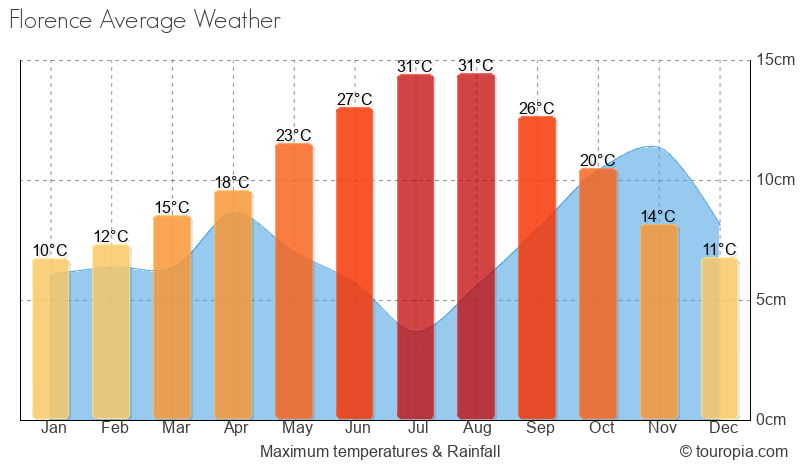
The best times of year to visit Florence are either in spring or autumn – so from April to June and September to October. This is when the weather is mild but sunny and prices are a bit lower.
In summer, the city is overrun with tourists and the scorching heat makes sightseeing quite unpleasant at times. While July is the hottest month, averaging highs of 29°C (84°F though often much hotter), August is when most locals take their holidays and head out of Florence, closing their shops and restaurants in the meantime.
For a more authentic experience, you may also want to consider visiting between December and February. During this time the city is very quiet, prices are low and there are almost no queues and crowds. The weather is much cooler however, averaging from a low of 8°C (46°F) to a high of 9°C (49°F).
Although Florence doesn’t go all out for Christmas, the decorations and lights make it pretty magical to explore in wintertime. Due to all its romantic streets, many people head here for Valentine’s Day with its carnival also enticing plenty of visitors in the run up to Lent.
Another unforgettable event is the fiercely-contested Calcio Storico which is held each June in Piazza di Santa Croce. An early form of football, it sees colourfully-clad players representing each quarter of the city battle it out before baying crowds of locals and tourists alike.

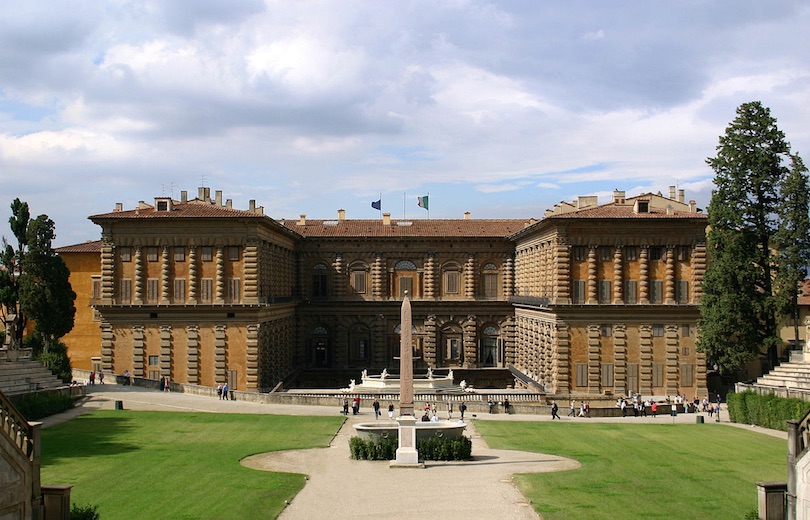
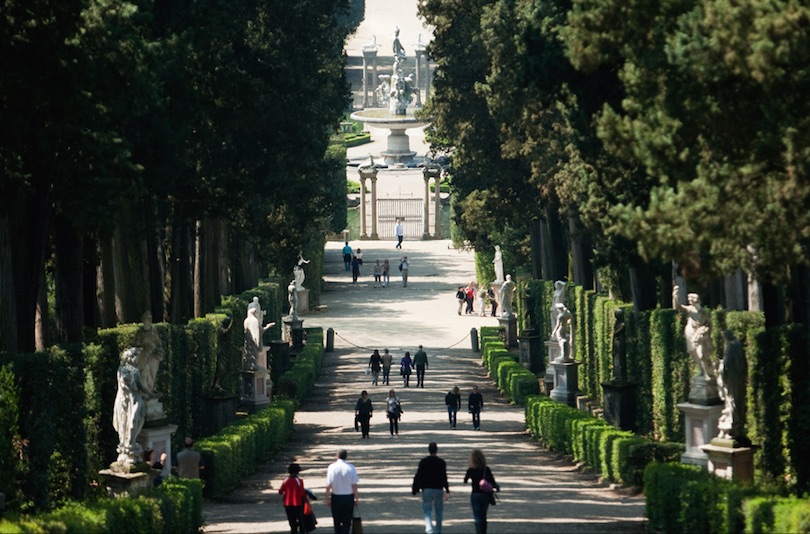
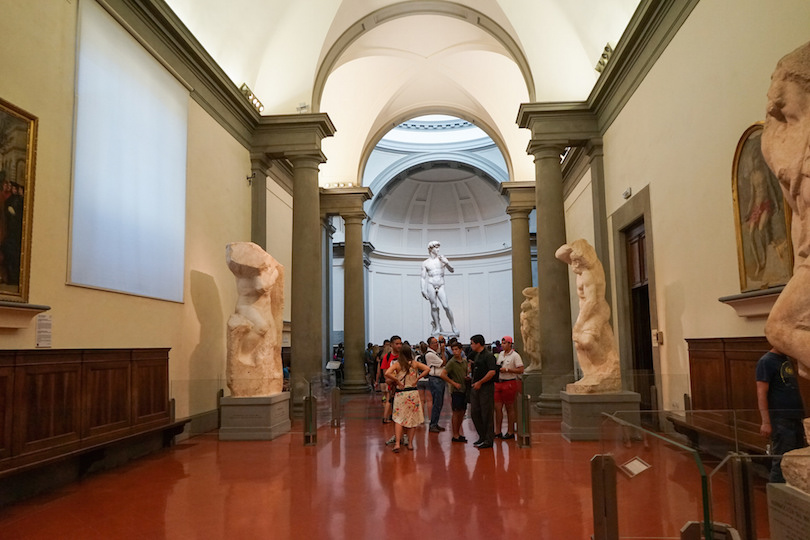
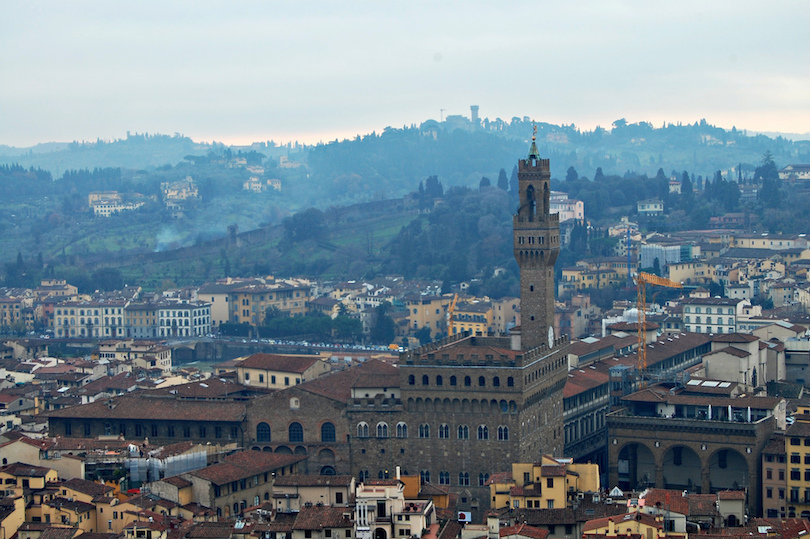
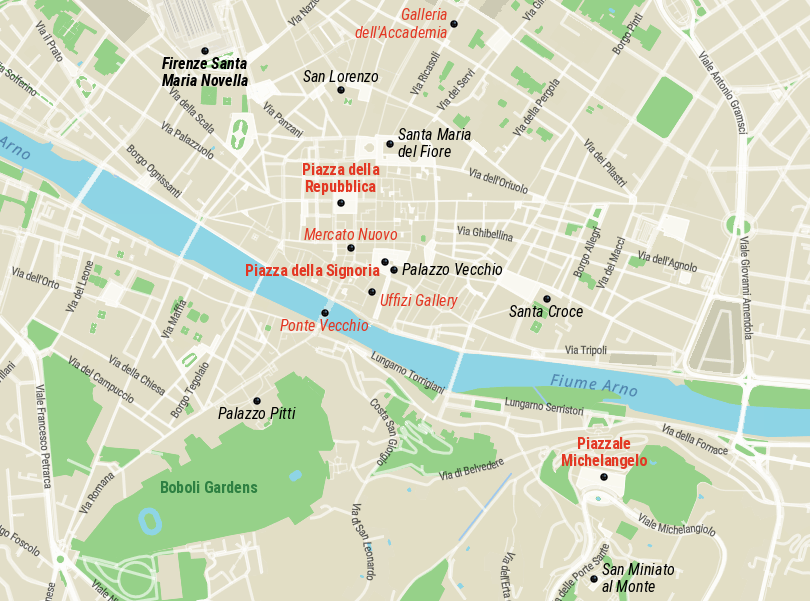
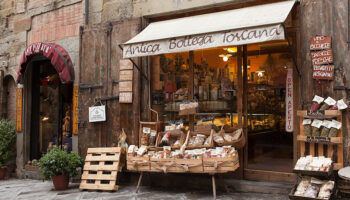
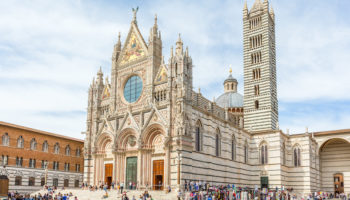
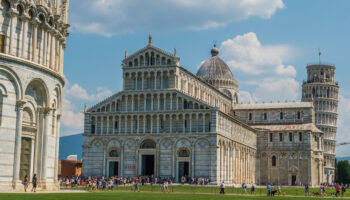
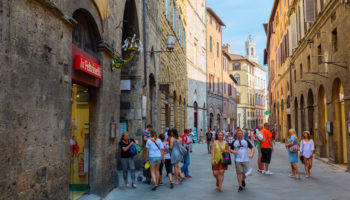
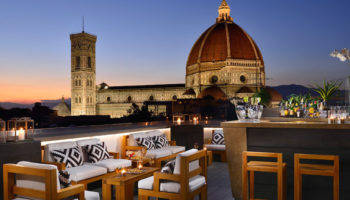
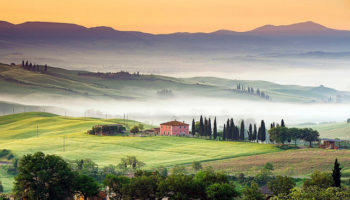


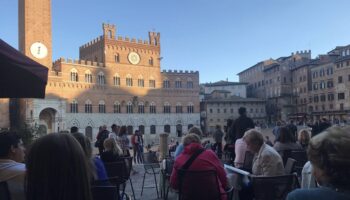
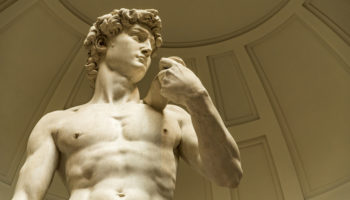
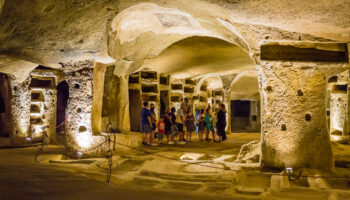
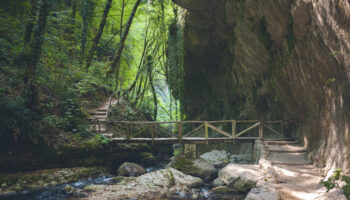
Perfect guide. I am planning a trip to Florence – so I have read your guide with great pleasure.
I am planning my trip in October – the temperature look ok, and that time 😉
Thanks for good advice and tips for places to visit in Florence. We planning to go this summer and looking forward to seeing the places mentioned.
The streets of Florence are a museum and a tribute to the incredible history of the capitol city of Tuscany. we spent many days getting to know the city by walking and also taking in the entire list that is discussed here. We have been to Florence twice and although it is a long way from Australia it is worth every moment spent travelling.
Go to this city and lose youself in the beauty and magic that it has to offer.
What a great guide! We definitely will keep this in mind, for when we are going to Florence. It is such a lovely place.
Wauw. This is a great post with a lot of valuable information. I haven’t been in Florence, but now I will def. consider it again when going to Italy
Yeah, it is a great list! I think you pick up the most important places and it is not easy because Florence is just full of things to see! I have one extra place to add and that is Piazza Santa Croce and its church. To me that’s the most authentic square you can find and it has a special charm. Of course it is a touristic attraction but less then others and its light is very special. I love to sit on one of its stone bench and just stare at light changing the colour of the Santa Croce Church facade by the sunset. Here you can find some history too, and it is peculiar.
http://www.fibnb.com/insights/florence/basilica-of-santa-croce-in-florence/
Cammy
Great post with all the best things to do in Florence. I have a few pieces of extra advice: Choose Forti di Belvedere insteaf of Piazzale Michelangelo. The view is at least as awesome, and there are almost no tourists. Do take your time to get lost in the old streets of Florence. Actually this might be the true number 1 thing to do in Florence. If you can – time your visit in Florence for one the many festivals in the city. Especially Scoppio del carro – festival of the exploding cart is fantastic. Hope to see you in Florence sometime.
I agree with Jacob’s comment. I went through the list and couldn’t believe that the Galleria dell’Accademia was absent. I have been to Florence many times and always, ALWAYS take friends to see “THE DAVID” first thing.
Just realized I haven’t written a comment here, so I just wanted to say thank you for this awesome post. I bookmarked it before we went to Florence for 2 days in July this summer and it proved really helpful.
Thank you so much for an awesome guide!
Great article! I agree, Florence is fantastic. Just imagine all the great artists who lived here.
And yeah, Il Duomo is definitely the #1 attraction. I think you could add Galleria dell’Accademia to the list though – besides from that it’s perfect.